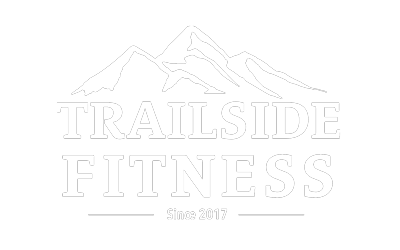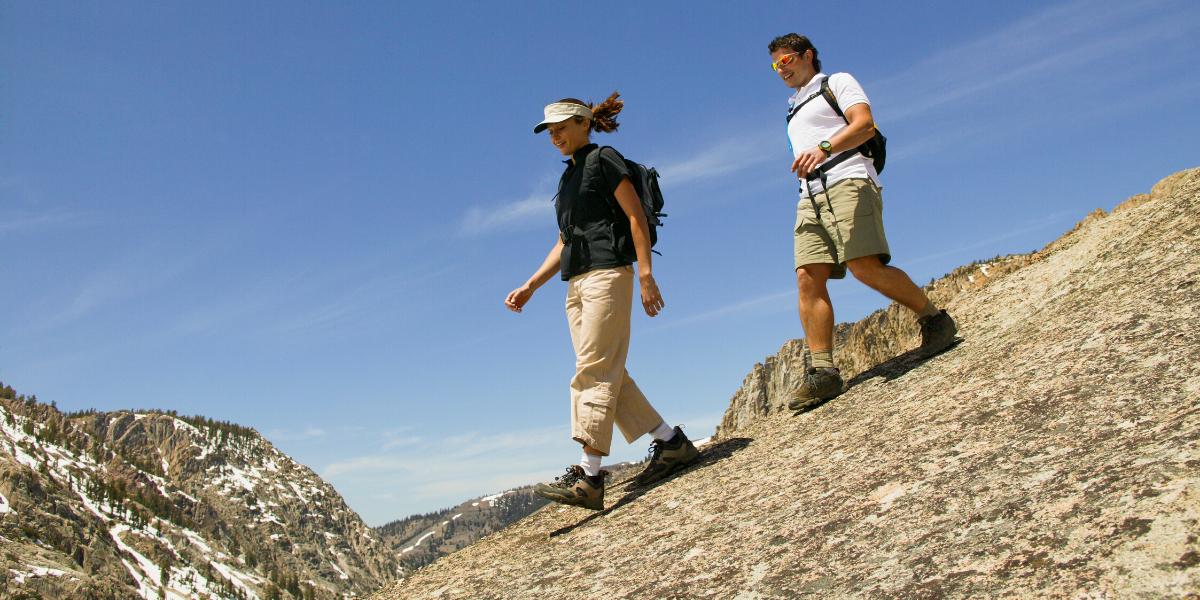Knee pain going downhill? Try this!
If you have knee pain going downhill, you are not alone! For many hikers, taking a steep step down can be painful for the knees while hiking. There are a few ways you can use the features of the trail to help decrease knee pain going downhill. By recognizing and using these features, you can reduce the pressure through the knee and have less pain. Let’s take a look.
Use the trail features
By using the features of the trail like rocks, roots, and natural step features, you can reduce stress on the knee going downhill. Studies have shown that the forward step down exercise increases knee pressure. The increased pressure causes more force through the knee joint, which often leads to pain going downhill.
This video is a typical trail scenario that shows a forward step-down. The arrow will highlight when a lot of hikers feel pain, and it is often when the knee is most bent. However, this is not always the case, and you may have pain anywhere in the lowering phase.
By reading and using the features of the trial, you can save yourself some knee pain. A better way of stepping down, in this case, is by performing a lateral step down. Lateral step-downs create less pressure through the knee, as reported in the study linked above. You’ll note the knee angle is still there, but now the hip muscles are better able to assist with the forces through the knee. This simple change in direction will do wonders for your knee pain!
More ways to reduce knee pain going downhill
When I’m hiking downhill, I’m always looking for ways to decrease stress and strain. Trekking poles are beneficial here and significantly reduce knee stress. Over the day, using trekking poles and the trail features add up to less knee pain. One of my other tricks is using a variation of the lateral step down.
In this clip, you’ll first see a forward step down; this is what we are working to avoid. By reading the features of the trail, I’m able to take a side step onto a rock and then a diagonal step forward. This method works to decrease the strain on the knee going downhill too. While the height of the step down hasn’t considerably changed, the force through the knees has.
Be mindful of your steps
With these tips in mind, you’ll want to be mindful of a few things. First and foremost, practice Leave No Trace ethics and only use the trail that is established. There is no need to step on the vegetation off the path. Just use the features given to you and not create your own.
Second, follow the path of least resistance. It might seem like there are more physical steps taken, but the stress of those steps is less than one giant step down. You don’t need much of a feature to help reduce the pressure through the knee. Small roots and rocks can do a lot here!
Lastly, use those trekking poles. Their use should be naturally timed with your walking. When the right leg goes forward, so does the left arm. On flat terrain, the trekking pole should land between the heel and the mid-foot, that’s where the most benefit will occur. If you have ever used a cane or crutches, this will feel familiar.
The trekking pole placement will vary some with uphill and downhill hiking. If the trekking pole is too far out in front of your foot (or behind), you can’t place enough pressure through the pole to take the pressure off of the knee joints. A little practice and awareness can go a long way here.
Are you still having knee pain?
If so, work on your strength for the quad muscles in the front of the leg. The perfect exercise for this is the 3-way step-down. Your quads need to be strengthened in the lowering motion, and this movement is ideal for this. Start with a low step height and work up as able.
You’ll also want to stretch and massage the quads on the front of your leg. If the muscles are tight, it can create additional tension through the kneecap when you bend your knee. If you reduce that tightness and the pain decreases, you’ve found one of your causes for knee pain.
Give these simple tips a try on your next adventure! Happy trails!


Recent Comments